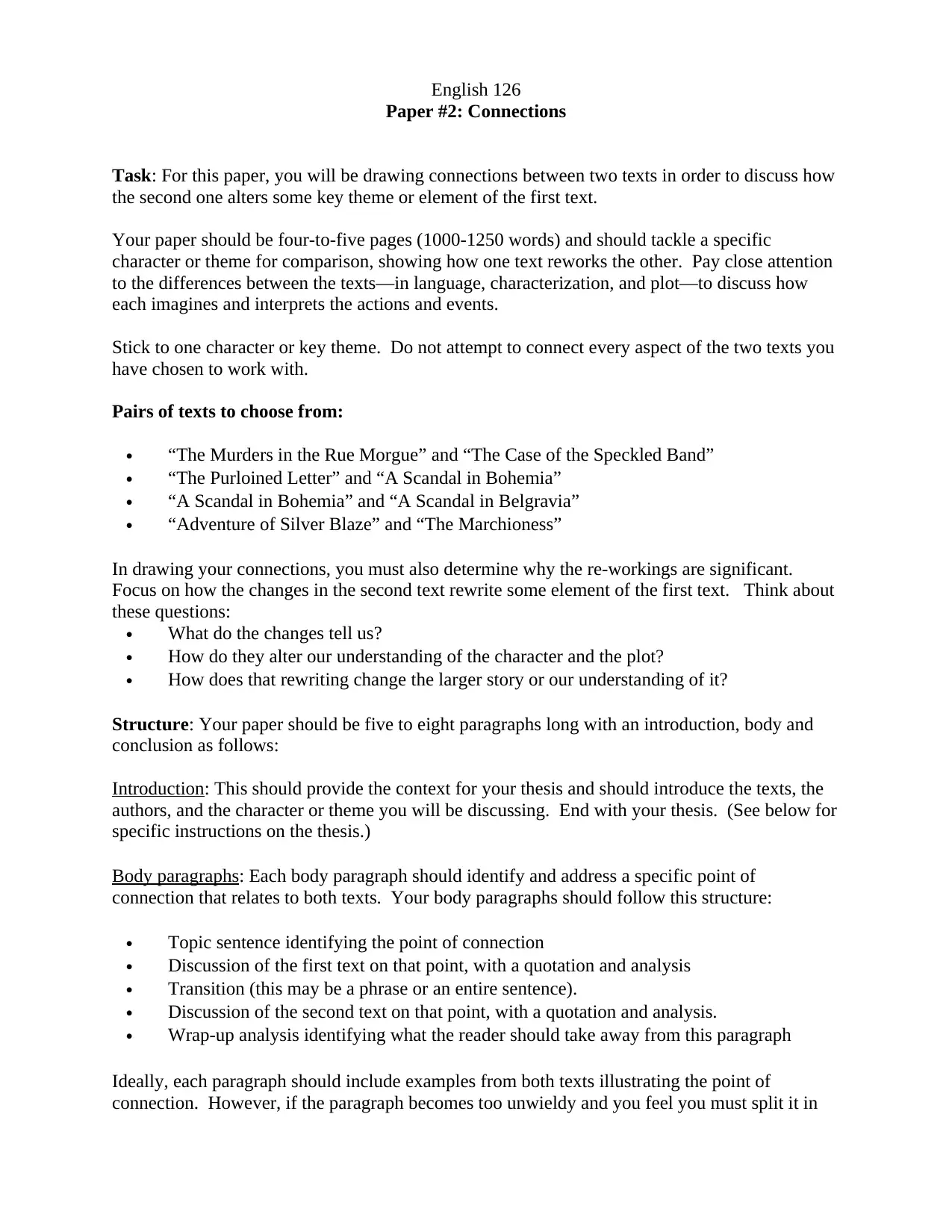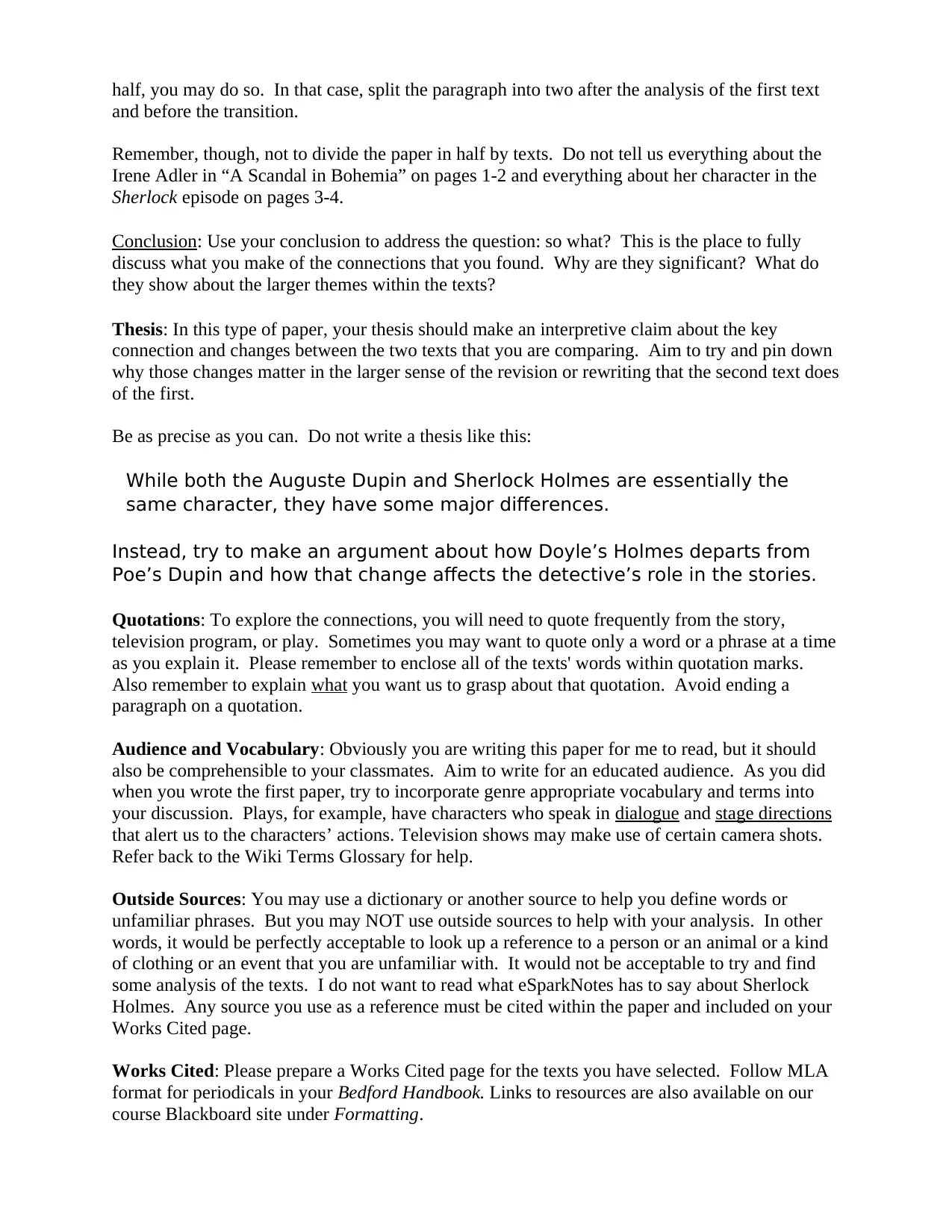English 126: Paper #2: Connections Task: Textual Comparisons
VerifiedAdded on 2019/10/16
|2
|1034
|711
Essay
AI Summary
This English 126 paper assignment, titled "Connections Task," requires students to compare two selected texts from a provided list, focusing on how the second text alters a key theme or character from the first. The essay, ranging from 1000 to 1250 words, demands a detailed analysis of the differences in language, characterization, and plot to understand how each text interprets events and actions. Students must formulate a thesis discussing the significance of these re-workings and changes. The essay structure includes an introduction with a thesis, body paragraphs with specific points of connection, and a conclusion addressing the significance of the found connections. Students are expected to use quotations, follow MLA format for the Works Cited page, and write for an educated audience. Outside sources are limited to definitions, not analysis, and must be cited. The goal is to explore how changes in the second text rewrite elements of the first, altering our understanding of the character, plot, and larger story, aiming to improve writing and analytical skills.
1 out of 2







![[object Object]](/_next/static/media/star-bottom.7253800d.svg)